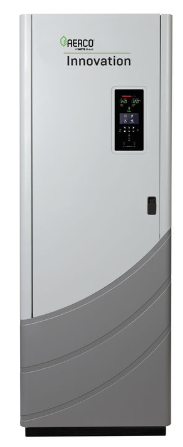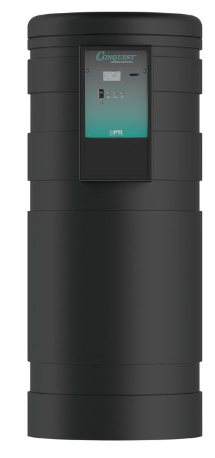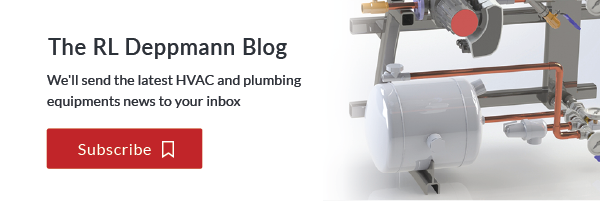 Building plumbing design will always include the need for a domestic hot water heater. Plumbing engineers will traditionally look at gas fired tankless or tank style water heaters. The gas fired appliances come with a carbon footprint that many clients would prefer to reduce. In parts of the country, many state and local codes require some sort of building carbon reduction or elimination. What is the thought process an engineer may use? Often, designing for carbon reduction can feel like pulling a heavy weight up a hill. Today, the R. L. Deppmann Monday Morning Minutes begins this journey to help lighten the load of designing for carbon reduction.
Building plumbing design will always include the need for a domestic hot water heater. Plumbing engineers will traditionally look at gas fired tankless or tank style water heaters. The gas fired appliances come with a carbon footprint that many clients would prefer to reduce. In parts of the country, many state and local codes require some sort of building carbon reduction or elimination. What is the thought process an engineer may use? Often, designing for carbon reduction can feel like pulling a heavy weight up a hill. Today, the R. L. Deppmann Monday Morning Minutes begins this journey to help lighten the load of designing for carbon reduction.
Starting the Journey of Traditional Water Heating Design
A plumbing engineer may decide on a gas fired tankless water heater in her commercial or institutional design. A fixture list is created, and a peak load is calculated based on the building type. She determines the instantaneous capacity required at the peak load in gallons per minute (GPM) for the delivery temperature required. She determines the owner’s requirements for life cycle cost of the system. This analysis may include such items as space required, first cost, equipment life expectancy, replacement cost, and maintenance/repair costs. She then selects the equipment and begins the process of plans and specifications.
A different engineer chooses to go right to a tank style water heater. This engineer uses storage to provide the hot water and manage the peak demands. The recovery capacity is determined in gallons per hour (GPH) and a storage temperature is determined. The storage temperature may be higher than the delivery temperature due to Legionella concerns. This system requires more mechanical room space but uses less gas at peak demand.
The Grade of the Road Changes when Decarbonization is a Goal
The engineer discusses options with the owner and an onsite decarbonized option is explored. This may be due to local codes, a client or engineer’s passion for saving the planet, or even an owner’s need to be a responsible green company for their customers. Regardless of how or why, the decision to limit the use of gas fired appliances will normally mean electrification.
Regardless of whether the design is tankless or tank type, electric water heaters tend to be the default many engineers use for decarbonization. There may be issues with power availability from the grid as more buildings turn to electricity as the power source. It may not be an issue today but what type of demand charges or electrical use penalties may be imposed in the future? For retrofit applications, what peak power is the building able to support? Some engineers and owners are looking at other options.
Heat pump water heaters may serve a valuable purpose in the fight against global warming and strained electrical supply sources. This article continues next week when we look at how a heat pump water heater works.



